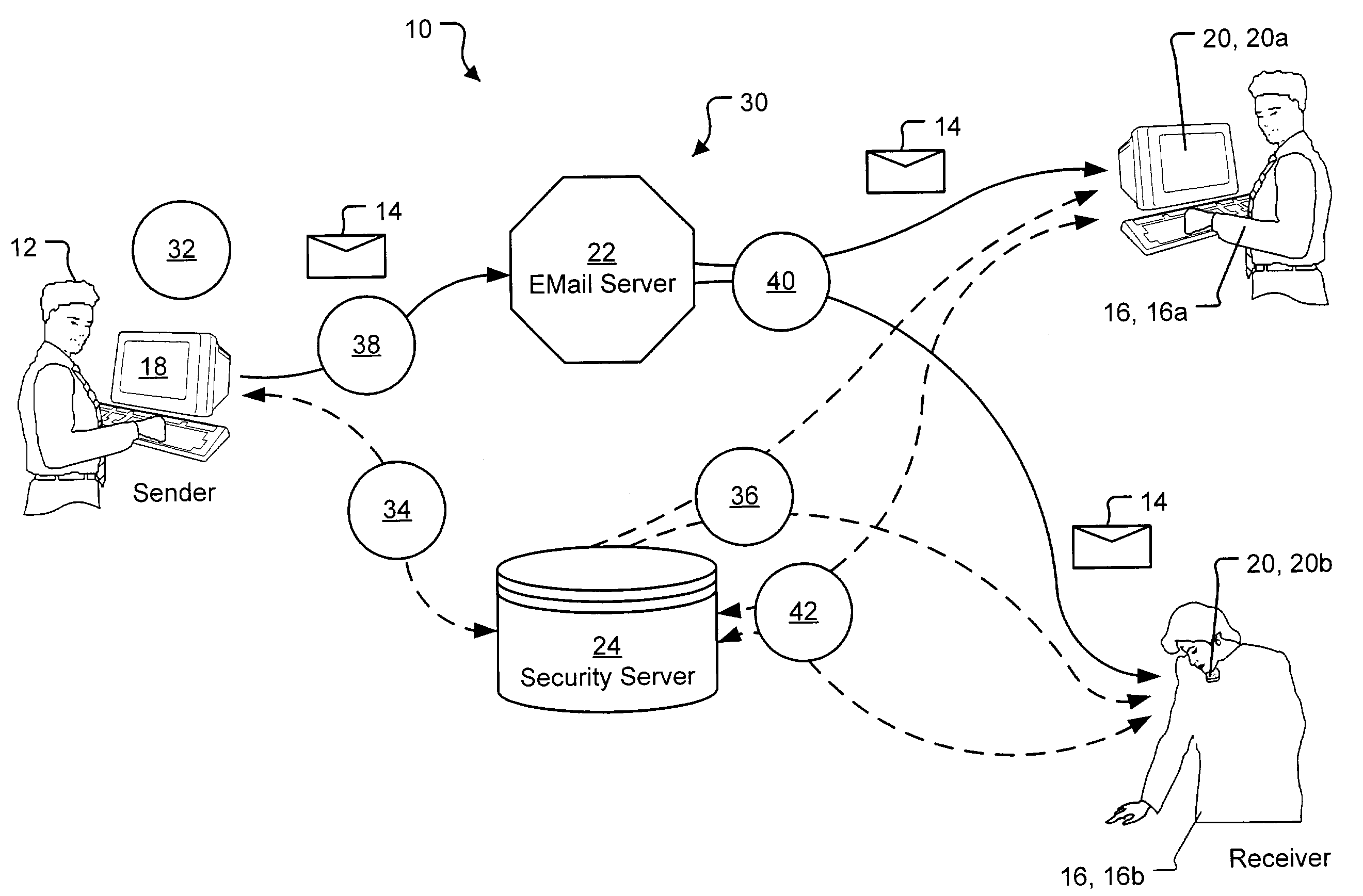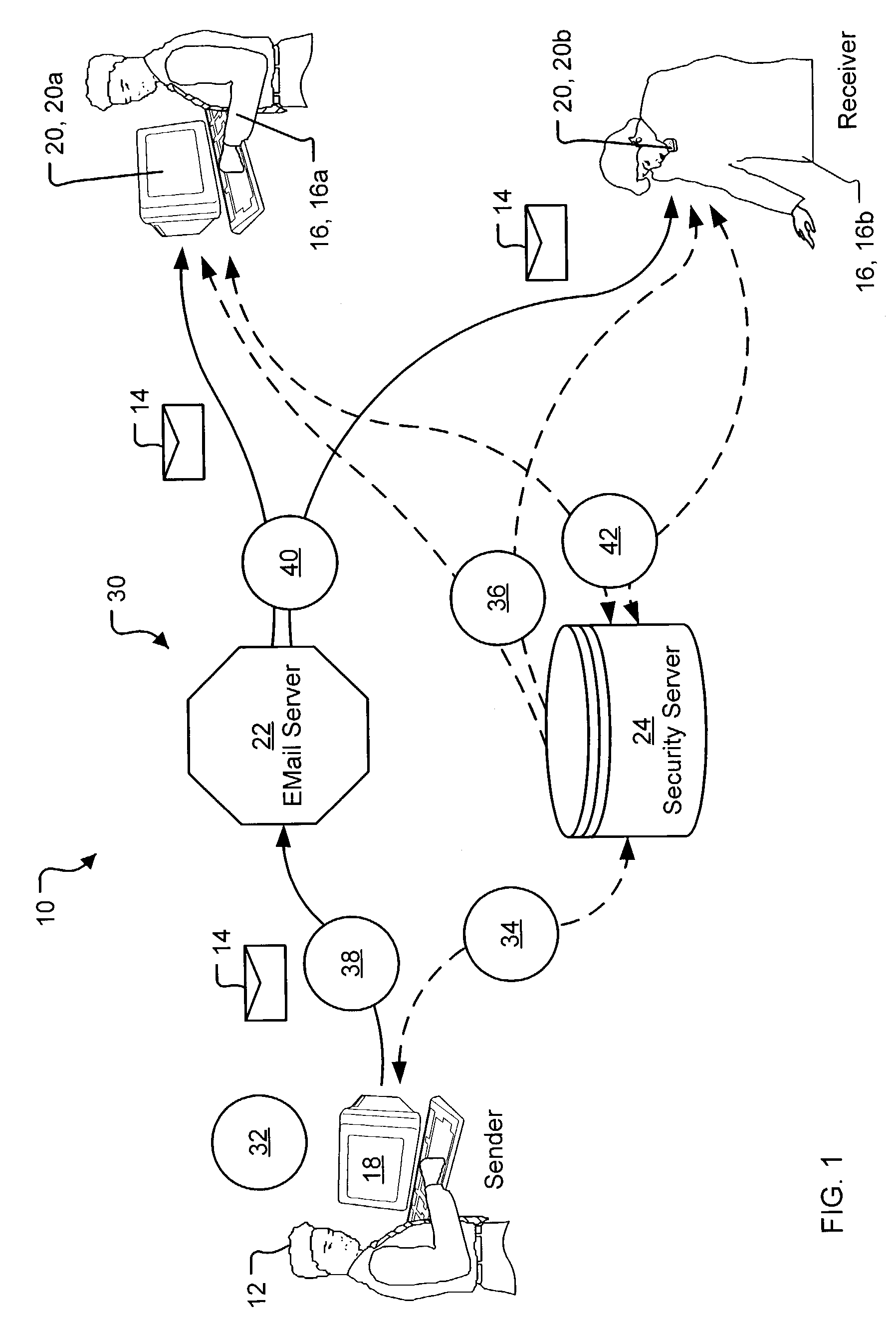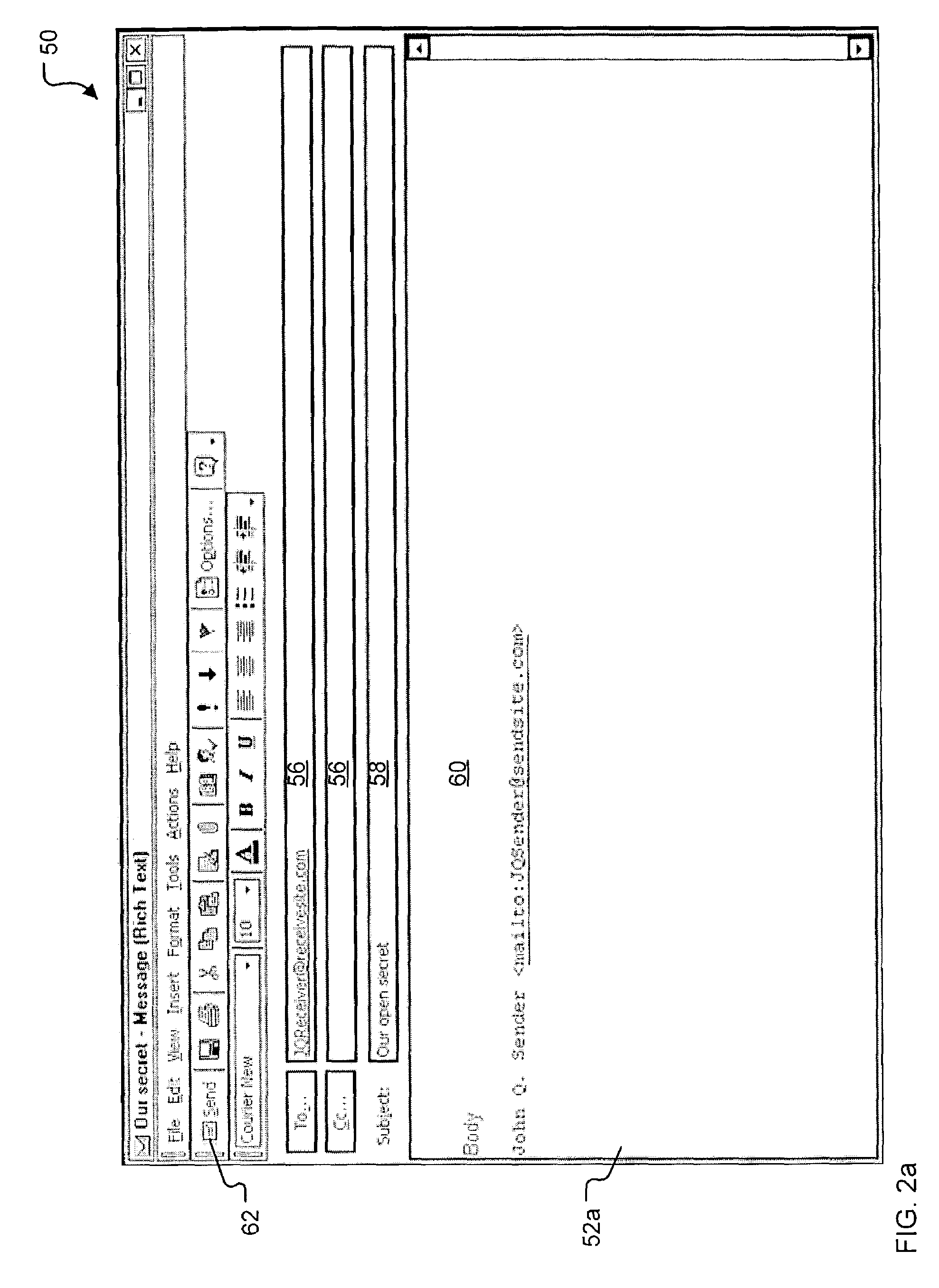Security server system
a server system and server technology, applied in the field of security server system, can solve the problems of severe e-mail security problem, low degree of trust of most of us, and inability to fully trust, so as to reduce the burden on those using it, high degree of message tamper detection, and high degree of secure message communication
- Summary
- Abstract
- Description
- Claims
- Application Information
AI Technical Summary
Benefits of technology
Problems solved by technology
Method used
Image
Examples
Embodiment Construction
[0040]A preferred embodiment of the present invention is a system for key exchange and secure collaborative communication based thereon. As illustrated in the various drawings herein, and particularly in the views of FIGS. 1 and 9, preferred embodiments of the invention are depicted by the general reference characters 10 and 210.
[0041]FIG. 1 is a schematic overview diagram generally depicting information flow in a secure e-mail system 10 in accord with the present invention. A sender 12 uses the secure e-mail system 10 to send a secure e-mail 14 to one or more receivers 16. To accomplish this the sender 12 employs a suitable sending unit 18 to create and send the secure e-mail 14, and the receivers 16 then employ suitable receiving units 20 to receive and view the secure e-mail 14. The secure e-mail system 10 further includes an e-mail server 22, which is essentially conventional, and a security server 24 (a form of key server, as discussed presently), that along with software modul...
PUM
 Login to View More
Login to View More Abstract
Description
Claims
Application Information
 Login to View More
Login to View More - R&D
- Intellectual Property
- Life Sciences
- Materials
- Tech Scout
- Unparalleled Data Quality
- Higher Quality Content
- 60% Fewer Hallucinations
Browse by: Latest US Patents, China's latest patents, Technical Efficacy Thesaurus, Application Domain, Technology Topic, Popular Technical Reports.
© 2025 PatSnap. All rights reserved.Legal|Privacy policy|Modern Slavery Act Transparency Statement|Sitemap|About US| Contact US: help@patsnap.com



